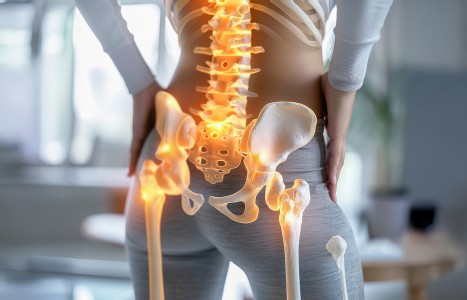Because they have yet to pass national legislation protecting the chiropractic profession, Japanese DCs are in a similar situation that U.S. DCs faced. We were fortunate enough to be able to pass chiropractic licensure state by state. The DCs in Japan must accomplish this nationally, which has proved to be an extremely difficult task. And in spite of their efforts, Japanese DCs are currently faced with two chiropractic professions.
What Does "Experimental" Mean?
I grew up on a farm in Minnesota. My brothers and I learned the agricultural business by living it. We were quite familiar with the experimental agriculture stations the federal government had established around the country in the 1930s to aid farmers in the aftermath of the great "dust bowl" of the Midwest. Many, if not all counties had access to an agent, employed at government expense, to advise farmers about the best available scientific information on maximizing yields and using land efficiently. Experimental agriculture was a definite boon to the industry. (Unfortunately, since my childhood, the federal agencies have become overbearing bureaucracies. Every employee of the Department of Agriculture, it is suggested, deserves his or her own farmer to manage!)
In my basic science studies at the University of Minnesota and Logan College, "experimental" also seemed to be a good thing. In physiology lab, we conducted various experiments. These were learning exercises, of course, and the idea was that if we followed defined procedures meticulously and made our calculations correctly, the results should come out as hypothesized. Obviously, these experimental exercises had been conducted many times before, and the theories on which they were based were well-established.
In my years of involvement with chiropractic research, "experimental" and even "quasi-experimental,"1 always had positive connotations. When we speak of controlled and quasi-controlled experiments and randomized clinical trials (RCT) of the chiropractic healing art, we are talking about the most important, significant and compelling kinds of data. When the Mercy2 and Glenerin3 conferences on clinical practice guidelines rated the quality of information available for various procedures and techniques, experimental evidence was graded "class 1," meaning the highest or most valid form of support. It was amusing to learn that the "RCT" clinical trial designs had evolved partly from agricultural experimentation, which took me back to my roots in the Minnesota farmland.
However, in the field of practice, as we all know, "experimental" often means something quite different. Insurance companies and other third-party payers (TPPs) relish the denial of claims for services rendered on the grounds that a particular procedure is "experimental." In this context, "experimental" is definitely not desirable. The TPP interpretation of the term is almost the opposite of what it means to the scientist. "Experimental treatment" for the TPP means that doubt remains about the validity or effectiveness of a clinical method or procedure. They won't pay for dubious treatments.
There has surely been a "ratcheting-up" of the kinds of data insurers and other TPPs have demanded as justification for compensation to providers. Nearly 20 years ago, when Dr. Jim Cox published his uncontrolled (i.e., nonexperimental) study of 576 cases of low back pain treated by flexion-distraction,4 and offered estimated numbers of treatments to produce a specified degree of clinical improvement, he was way ahead of the curve. One wonders, however, how this research might be described today. Did his observational (nonexperimental) study render flexion-distraction "better than experimental" in the eyes of the TPP?
We will never have all the experimental data we might like from which to pick and choose our methods of helping patients. Each patient will always present a unique constellation of factors and problems, and will always require us to exercise our best judgment in the individual case. Does this mean we will always be "experimental" in the eyes of the TPP? Not if justice prevails, for the majority of all health care procedures, such as medical, chiropractic, psychological, etc., are unproven. The problem is that TPPs have grown into a maze of procedures and bureaucrats that rival those of the Department of Agriculture. If TPPs hold to a policy by which only experimentally validated methods of healing can be reimbursed, our health care system is at risk of collapse. Ironically, some DCs have misconstrued the notion of evidence-based practice to mean that only experimentally valid procedures are acceptable for use.
This is where clinical practice guidelines might come into play, for they can provide an interim or "pseudo" standard, despite the lack of evidence, by combining existing data with expert clinical opinion. Of course, clinical guidelines and the ratings of experienced clinicians are fraught with their own hazards. Ratings are opinions, and such guidelines should not be misconstrued as experimental evidence. Ratings without adequate data are necessarily tentative, provisional, and subject to reinterpretation, especially as new data emerges. However, as we've seen in recent years, guideline formation is not always guided by reason and logic. Additionally, with so many loose cannons in our profession, we're at risk of shooting ourselves in the foot.
Language is important. Semantics can be trivial; they may also be profoundly helpful or harmful. Our history is filled with words bearing multiple connotations and denotations: terms like "manipulation," "adjustment," "subluxation," or "innate." Depending upon the context and the audience, they may or may not communicate well. Please add "experimental" to this list, and use it carefully, lest we suffer unintended consequences.
How far we have come! How far we have to go!
References
- Campbell DT, Stanley JC. Experimental and Quasi-Experimental Designs for Research. Chicago: Rand McNally & Company, 1963.
- Haldeman S, Chapman-Smith D, Petersen DM (Eds.): Guidelines for Chiropractic Quality Assurance and Practice Parameters: Proceedings of the Mercy Center Consensus Conference. Gaithersburg, Md: Aspen, 1993.
- Henderson D, Chapman-Smith D, Mior S, Vernon H. (Eds.) Clinical Practice Guidelines for Chiropractic Practice in Canada. Proceedings of a Consensus Conference Commissioned by the Canadian Chiropractic Association; held at the Glenerin Inn, Mississauga, Ontario, Canada, April 3-7, 1993. Toronto: Canadian Chiropractic Association, 1994.
- Cox JM, Shreiner S. Chiropractic manipulation in low back pain and sciatica: statistical data on the diagnosis, treatment and response of 576 consecutive cases. Journal of Manipulative & Physiological Therapeutics 1984 (Mar);7(1):1-11.
Arlan Fuhr, DC
Phoenix, Arizona
awfuhr@aol.com


